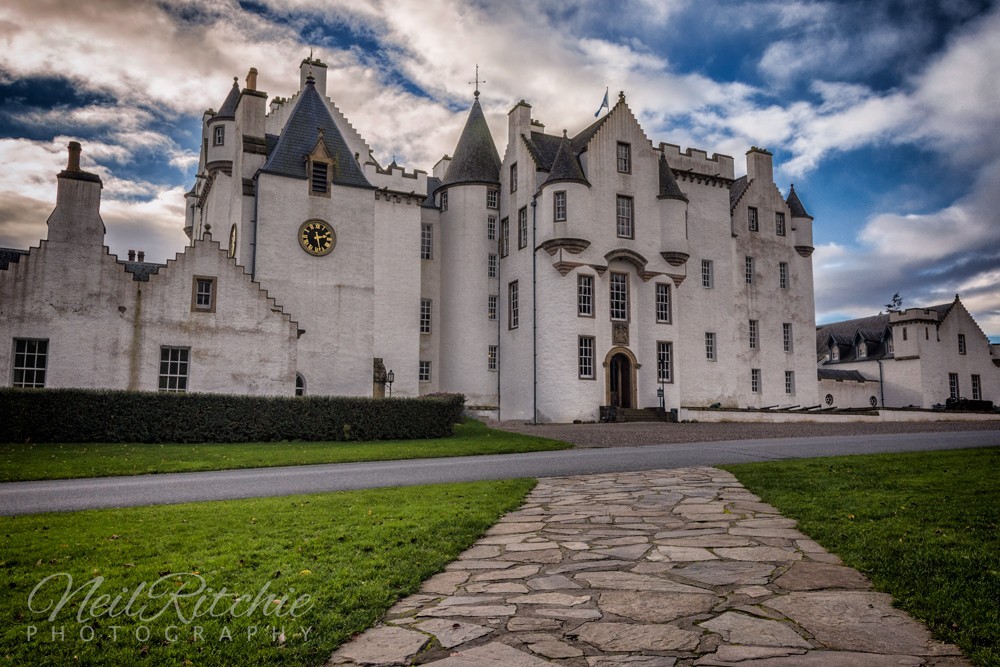On the 17th March 1746, a Jacobite force under the command of Lord George Murray began the siege of Blair Castle in Blair Atholl, Perthshire. Blair Castle was the home of Lord George’s pro-Hanoverian brother, James Murray, 2nd Duke of Atholl. Holding the castle against the Jacobites was Lieutenant-Colonel Sir Andrew Agnew of the Royal Scots Fusiliers.
The Jacobite ’45
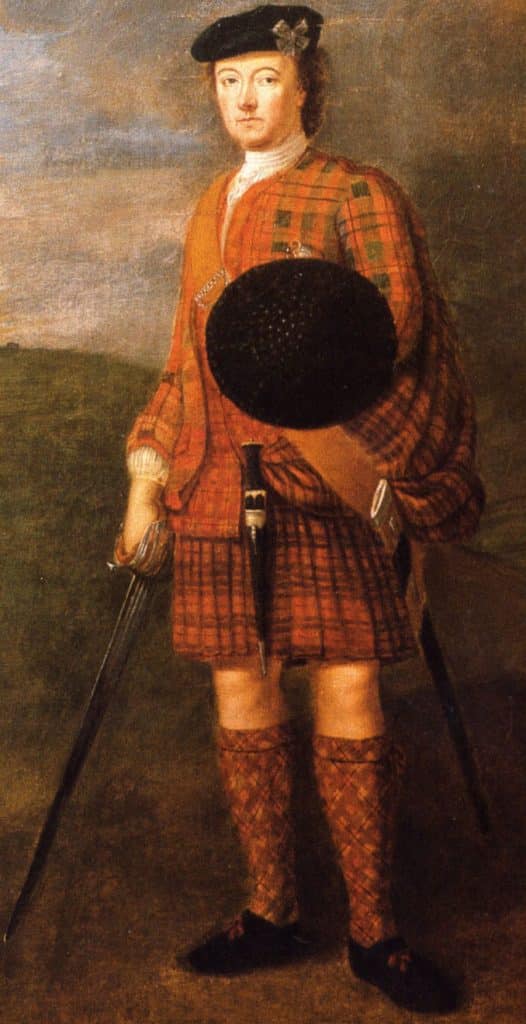
After fighting for the Stuart cause in the failed Jacobite Rising of 1715, William Murray, Marquess of Tullibardine, was excluded from the succession to the Dukedom of Atholl, which, on the death of his father, passed to his younger brother, James Murray, who became the 2nd Duke of Atholl. William had also taken part in the Jacobite rising of 1719.
After exile in France, and in a bid to reclaim his land and titles, William returned to Scotland as part of Charles Edward Stuart’s entourage and raised the Athollmen in the Jacobite Rising of 1745. These men formed the bulk of the Atholl Brigade, which would be commanded by William’s brother, Lord George Murray.
Lord George had also fought for the Stuarts in the 1715 and 1719 risings and thanks to the efforts of his Hanoverian brother Duke James he was granted a pardon. He was initially hesitant in joining
Despite lukewarm support for Charles in Scotland, the Jacobite military campaign began successfully with the outmanoeuvring of government forces led by Lieutenant-General Sir John Cope in the Highlands, the capture of Edinburgh and then victory over Cope’s army at the Battle of Prestonpans on 21 September 1745.
Following this, the Jacobites then moved into England intending to capture London, remove the Hanoverian George II and return the House of Stuart to the throne of Great Britain. However, with a lack of support in England, promised French assistance not
The last major Jacobite success came on 17 January 1746 when they defeated a government army led by Lieutenant-General Henry Hawley at the Battle of Falkirk, however, the Jacobites failed to take advantage of their victory.
Retreat to Inverness
Following the Battle of Falkirk and the unsuccessful siege of Stirling Castle, Charles and his Jacobite forces continued their retreat northwards, towards Inverness, pursued by government forces led by George II’s son and Charles Edward Stuart’s cousin, Prince William Augustus, Duke of Cumberland.
On 2 February, the Jacobite leadership held a council of war in the Drummond Arms Hotel in the town of Crieff.1 The majority of those present (Lord George Murray among them) were in favour of continuing the retreat.
The Jacobite army was then split for the march north, with Lord George taking the Lowlanders via Perth, Dundee, Montrose and Aberdeen, and Charles with the Highlanders and artillery taking the road via Dunkeld, Blair Castle, Ruthven and Moy. This was a much easier route for the artillery as most of the way was along General Wade’s military road, ironically built to help pacify the Highlands.2
On 6 February, Charles and his troops marched through the Pass of Killiecrankie and arrived at Blair Castle. This was Charles’ second visit to Blair Castle, the first being in September the previous year at the start of the rising when James Murray, 2nd Duke of Atholl, had fled, abandoning Blair to the Jacobites.3
Charles would stay at Blair Castle until the 10th when he and his men continued towards Inverness. On 17 February, while Charles was staying at Moy Hall, just eight miles from Inverness, government Highlanders attempted and failed to capture him. The event became known as the ‘Rout of Moy’. By the end of February, most of the Jacobite forces had arrived in Inverness.4
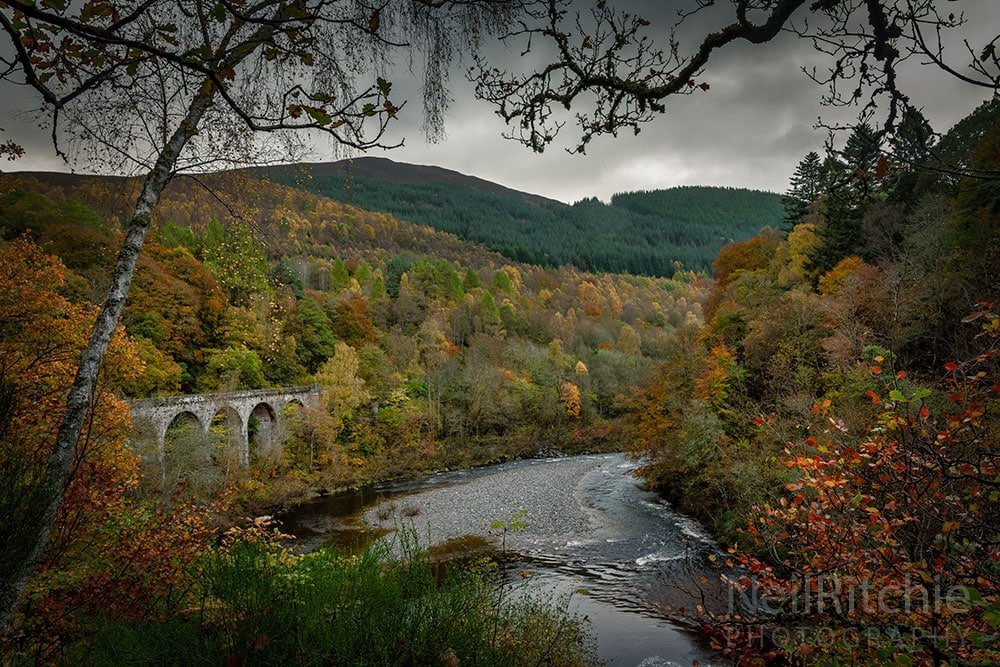
Upon his arrival at Perth on 6 February, the Duke of Cumberland sent out detachments with the aim of securing Atholl. Cumberland ordered the battle-hardened Sir Andrew Agnew of Lochnaw, lieutenant-colonel of the Royal Scots Fusiliers to take 300 regular troops drawn from various regiments in Cumberland’s army (including around 60 from his own regiment) along with 150 Argyll Militia and to march through the Pass of Killiecrankie and secure the strategically important Blair Castle, near the north end of the pass.5
The castle was now lying empty following the Jacobite departure. In 1689, the race to secure Blair Castle had resulted in the Battle of Killiecrankie, the first major battle of the first Jacobite risings.
Before leaving for Aberdeen with the main government army, Cumberland also deployed a detachment of infantry under Lieutenant-Colonel Francis Leighton to Castle Menzies where they could secure and guard Wade’s Tay Bridge crossing the River Tay at Aberfeldy.6 Castle Menzies would also be used as a logistics base for the forwarding of food and supplies to the outposts in Atholl.
A regiment of dragoons along with two regiments of hired Hessian infantry under the command of Major-General John Lindsay, Earl of Crawford, and Prince Friedrich of Hesse were left behind at Perth to guard against any Jacobite attempt to break out into the Lowlands, and to reinforce government positions in Atholl if necessary.
Around 5,000 Hessian soldiers had arrived at Leith on 8 February to support the military effort and were regarded as the best-drilled troops that the government had available during the campaign.7 The Hessians replaced Dutch and Swiss troops in government service that were recalled due to the terms of their parole which forbade them to take the field against French troops now serving on the Jacobite side.8
The Atholl Raid
By March the main Jacobite army was now based in and around Inverness while the bulk of the government forces under Cumberland were on the east coast at Aberdeen. Although he had strongly supported the retreat, Lord George Murray was now thinking of opening the way back into the Lowlands. He saw an opportunity to quickly strike south into Atholl, targeting isolated government outposts and preparing the ground for a larger move south.9
The move into Atholl was also likely aimed at disrupting the perceived government pincer movement on Inverness. Lord George also had the intention of capturing his ancestral home of Blair Castle, now occupied by Lieutenant-Colonel Agnew.
Agnew had sent out detachments of his regulars along with the Argyll Militia to guard strategic points in the surrounding area, most notably the northern end of the Pass of Killiecrankie, the Bridge of Bruar, the Bridge of Tilt and the House of Lude. Agnew’s strength at Blair Castle was roughly 300 men with another 300 manning the various posts in the vicinity. His officers had begun to frequent the Blair Inn near the castle, in the village now known as Old Blair. Molly, the attractive daughter of the innkeeper, was likely one of the reasons for their regular visits.10
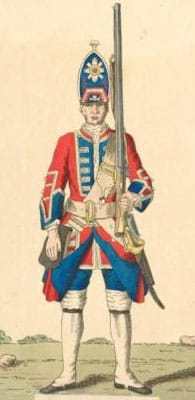
Lord George Murray with his Atholl Brigade and a couple of light cannons left Inverness around 14 March and quickly captured Castle Grant before moving on to Ruthven on the 16th, where Lord George was reinforced with around 300 Macphersons, led by Cluny Macpherson. The combined force now numbering around 700 moved to Dalnaspidal where they split into smaller detachments, with each one given a specific government outpost to attack.
In the March 1746 edition of the Scots Magazine, it reported that ‘a corps of the rebels consisted of
Government positions at Bunrannoch and the Bridge of Tummel which were held by detachments of the Earl of Loudoun’s 64th Highlanders were also taken.11 The troops at Bunrannoch were under the command of Lieutenant Colin Campbell of Glenure who was at Castle Menzies at the time of the attack. Glenure is best remembered for being the victim in the famous Appin Murder on 14 May 1752.
Most of the outposts were captured without a single shot being fired and around 300 prisoners were taken. Jacobite outposts were established at the other end of the pass at Pitlochry and also at Dunkeld, to warn of approaching government troops from Perth.
Published in 1852, Thomas Wright’s The History of Scotland states that, ‘A party of soldiers from Blair were at Lude, and their officers in Blair inn when the former were surprised and captured; but the officers with great difficulty succeeded in making their retreat into the castle. Sir Andrew Agnew, the governor of Blair Castle, immediately sallied
Regarding the surprise attack on his outposts, Agnew would later complain bitterly in a letter to the Duke of Cumberland’s secretary, Sir Everard Fawkener, in which he stated, ‘this was done before I had information that the rebels were come to attack me, which is a plain demonstration what a villainous country this is’.
The Siege of Blair Castle
By midday on the 17th, Lord George Murray had set up his headquarters at the Blair Inn and deployed his two cannons, a 4-pounder and a 3-pounder, in the nearby churchyard of St Bride’s Kirk, overlooking the castle. St Bride’s was the final resting place of Jacobite leader John Graham of Claverhouse, who was killed at the Battle of Killiecrankie.
Since no Jacobite was brave enough to approach the castle, Molly, the innkeeper’s daughter who knew some of the government officers, was sent to the castle with demands for the garrison to surrender, written on ‘a very shabby piece of paper’.12
The demands for surrender were rejected by a furious Lieutenant-Colonel Agnew who threatened to shoot the next messenger that Lord George Murray sent. As Molly departed an officer said to her that it wouldn’t be long before the Jacobites were driven away and that they would be back drinking at her father’s inn.
Sir Andrew Agnew then prepared the castle for a siege.
Writing in 1808 General Robert Melville, who was a young officer under Agnew during the siege, described Blair Castle:
“Blair Castle was then irregular and very high, with walls of great thickness, having what was called Cumming’s Tower projecting from the west end of the front of the house, which faces to the north. The entrance into the ground story of that tower was by a door in the centre of its east side without the house, but it might be defended. by musket-fire from some of the windows.
The great entrance into the house itself was by a large door on the east side of the staircase projecting from the front to the north, and adjoining to the east gavel of the old house a square new building had been begun, but only carried up to a few feet above some joists fixed for the first floor.
There was at four or five yards’ distance eastward from that new building a strong wall running north and south for forty or fifty yards, and fifteen or sixteen feet in height, forming the end of a sunk bowling green, and serving as a strong re taining wall to the above ; above the centre of this wall was a pretty large recess for holding the bowls, and into which per sons might occasionally retire.
Along the north side of this bowling-green ran a range of office houses (but between this period and the autumn of 1777, when the writer of this had the honour to visit the Duke and Duchess of Atholl, there had been great alterations made).”
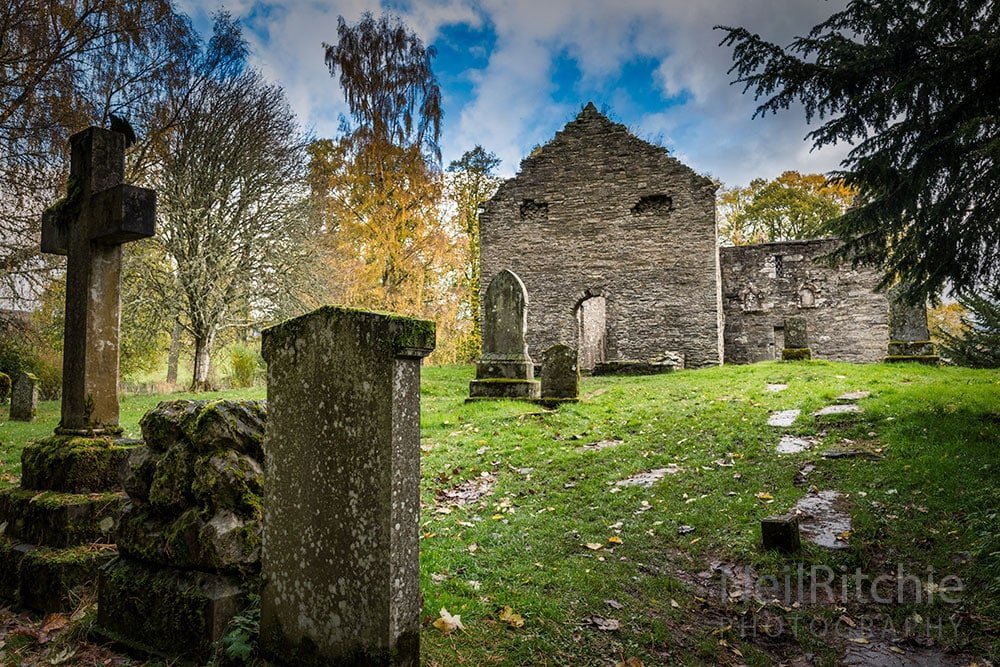
The first shot from the Jacobite guns was fired on 18 March by Lord George’s cousin Charlotte Robertson, Lady Lude, whose nearby house had been one of the government outposts and had been vandalised by the troops stationed there.13
Shortly after the bombardment began, Lieutenant-Colonel Agnew is said to have shouted out, “Is the loon daft, knocking doon his ain brothers hoose?”14 The cannon fire made very little impression on the thick walls of the castle. The Jacobites then began to fire red-hot cannonballs at the roof, which caused some damage, and on a few occasions began small fires, but they were easily extinguished by the garrison.
It is said that the red-hot cannonballs were dropped into buckets of urine since water in the castle was in very short supply. The Jacobites also fired on the castle with long-range musket fire which inflicted no casualties. To save what little ammunition that they had, Agnew instructed his men not to fire back unless the enemy came close.
The main danger facing Agnew’s troops was their food supply running low. A Journey Through Part of England and Scotland Along with the Army Under the Command of His Royal Highness the Duke of Cumberland, published in 1747, mentions the Royal Scots Fusiliers being forced to eat horse flesh during the siege after their supply of food had run out. This is also reported in the Scots Magazine of March 1746, ‘Sir Andrew Agnew’s conduct is highly applauded. The garrison were so reduced, that they had nothing to live upon but horse-flesh for some days before the rebels left the country.’
Conditions inside the castle were grim. An account of the situation by an officer was published in A Journey Through Part of England and Scotland: “The first week of our stay here we had a hard frost, with much snow, then came on a great thaw and wind; immediately after that came a frost again; these sudden changes, and cold windy weather (and by reason of keeping our men so closely confined in Blair Castle), breathing in the most nasty scents, which arise from one and the other lying upon straw, almost brought a pestilence among them.” With a lack of firewood, the soldiers were forced to strip wood from parts of the castle to burn.
There was panic among the garrison when noises were heard coming from the cellar, and it was initially thought to be the
At some point during the siege, Lieutenant-Colonel Agnew sent a messenger out to reach the Earl of Crawford at Perth and request assistance. On 27 March, Crawford and the Prince of Hesse with the government dragoons and Hessian infantry reached Dunkeld and dispersed a small Jacobite force there, before moving on to Pitlochry where another Jacobite detachment was routed.
The Jacobites fell back to the Pass of Killiecrankie, where they could have held off the government forces had they sufficient numbers. On the 31st the government reinforcements were within striking distance of Blair Castle.
While in the Pass of Killiecrankie, Crawford ordered some of his men to fire their muskets, ‘which on account of the confined situation and steepness of the hills, made such a tremendous echo that the report made the rebels lift the siege’. Lord George Murray did indeed raise the siege that same day and withdrew back towards Inverness.15
Lord George had received orders from Charles Edward Stuart to return to Inverness at once so that he could help prepare the Jacobite army for the expected encounter with the Duke of Cumberland and the main government force. That fateful encounter would take place on 16 April, on Culloden Moor.
When Crawford and his troops finally arrived at Blair Castle, Agnew drew up his soldiers to receive him, and addressed the Earl: “My lord, I am very glad to see you; but, by all that’s good, you have been very dilatory; we can give you nothing to eat.”
In the Memoirs of Sir Andrew Agnew of
The siege of Blair Castle was the last time a castle was placed under siege in Britain.
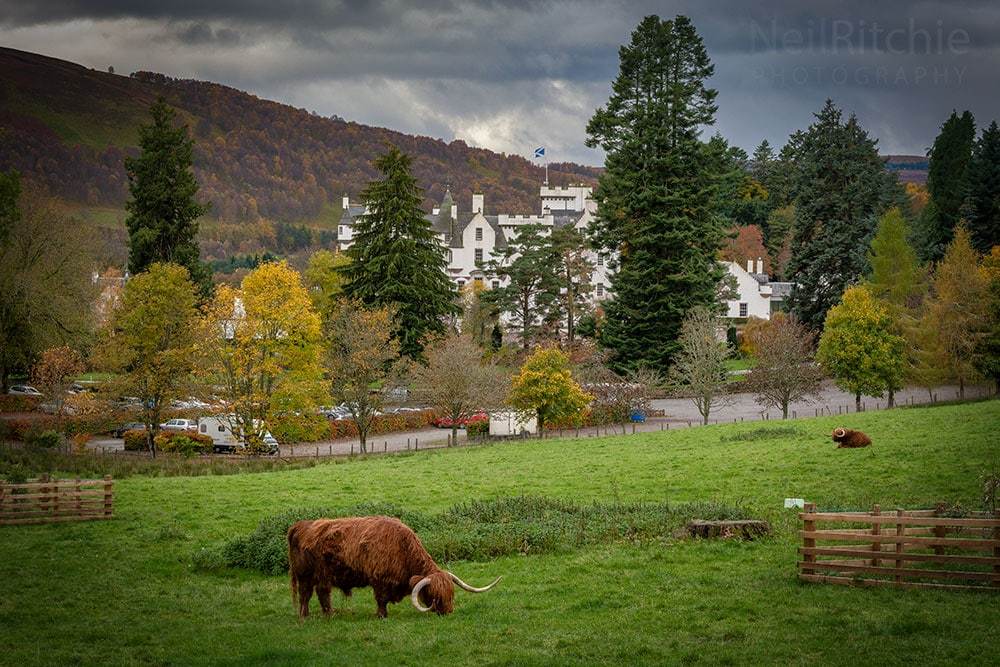
It could be argued that if Lord George Murray had received reinforcements from Inverness he may have succeeded in driving back the government forces coming from Perth to relieve the siege of Blair Castle.
If the siege had continued for a few more days it may have forced the surrender as the garrison was dangerously short on food. However, it is difficult to see a man like the formidable Lieutenant-Colonel Agnew, a
Lord George later claimed that he asked Charles Edward Stuart to send 1000 men so that he could inflict a defeat on the government troops under Crawford and the Prince of Hesse. It’s possible that if this had happened, the Duke of Cumberland would have been forced to retreat from Aberdeen.
It could also be argued that the Atholl campaign was a drain on resources that were desperately needed elsewhere, most notably the
Following the relief of Blair Castle, Lieutenant-Colonel Agnew remained in command at the castle. His second-in-command, Major Charles Colville, commanded the Royal Scots Fusiliers at the Battle of Culloden.
A letter published in The Scots Magazine in March 1746 details the events of the siege of Blair Castle and also criticises the lack of reporting on the siege:
“It gives me some pain to observe that your news-writers have taken so little notice of the gallant defence made by the garrison at Blair. The rebels, by marching all night, concealed their design so well, that they were within two miles of Blair before the garrison had any notice of their being nearer then Badenoch. How soon they got intelligence, they with great alertness carried their sick from one of the office-houses near the castle, and took in their horses, with what forage and fuel was at hand.
Afterwards Sir Andrew Agnew drew up his men before the castle, and kept them under arms for some house, offering the rebels battle. But they were too wise to attack the Lieutenant-Colonel of the Scots Fusiliers, whose bravery they were no strangers too. When Sir Andrew perceived that they kept themselves behind park-dikes, he drew his men into the castle and made the proper dispositions for standing a siege.
All Monday, the 17th March, being the first day of the siege, there was little firing. The rebels paraded around the castle at a great distance, endeavouring to make their numbers appear as great as possible. Early on Tuesday morning they began to play upon the castle with two pieces of cannon, a four pounder and a three pounder.
But observing that no impression was made upon the wall, they pointed they cannon at the roof, and did a good deal of damage, especially after they began to throw red-hot bullets, of which they threw a great many: but much was the alertness of the garrison, that their carpenters were ready to cut out the bullets where-ever they struck, and to throw them out, or cool them in water.
The rebels having thrown 207 cannon-bullets, of which 185 were red-hot, and did a good deal of damage to the roof and wainscotting, sent off their cannon to Dalnacardich, so as not to retard them in case of retreat; which they began to think of in good earnest when the Hessians approached.”
Notes:
- Robert Chambers, History of the Rebellion in Scotland in 1745, 1746, volume II, 4th edn (Edinburgh: Constable, 1830).
- William Taylor, The Military Roads in Scotland, 2nd edn (Argyll: House of Lochar, 1996).
- Stuart Reid, 1745: A Military History of the Last Jacobite Rising (Staplehurst: Spellmount, 1996).
- Christopher Duffy, The ’45: Bonnie Prince Charlie and the Untold Story of the Jacobite Rising (London: Orion Books, 2007).
- ‘The Siege of Blair’, Chambers’ Edinburgh Journal, 24 October 1835, p.310.
- ‘Motions and Operations of the Armies’, The Scots Magazine, March 1746, p.89.
- Christopher Duffy, ‘Hidden Sympathies: The Hessians in Scotland 1746’, in Paul Monod, Murray Pittock, Daniel Szechi (eds), Loyalty and Identity: Jacobites at Home and Abroad (London: Palgrave Macmillan, 2010) pp.120-130.
- Christopher Duffy, The Best of Enemies: Germans vs. Jacobites, 1746 (Chicago and London: Bitter Books, 2013); Jonathon D. Oates, The Jacobite Campaigns: The British State at War (London: Routledge, 2016).
- Trevor Royale, Culloden: Scotland’s Last Battle and the Forging of the British Empire (London: Little, Brown, 2016).
- John Heneage Jesse, Memoirs of the Pretenders and Their Adherents (London: Henry G. Bohn, 1845).
- Christopher Duffy, ‘The Jacobite Wars, 1708-46’, in Edward M. Spiers, Jeremy A. Crang, Mathew J. Strickland (eds), A Military History of Scotland (Edinburgh: Edinburgh University Press, 2012) p.374.
- Thomas Maccrie, Memoirs of Sir Andrew Agnew of Lochnaw (London: Johnstone and Hunter, 1850).
- Katherine Tomasson, The Jacobite General (Edinburgh: William Blackwood & Sons, 1958).
- Andrew Agnew, The Agnews of Lochnaw: A History of the Hereditary Sheriffs of Galloway (Edinburgh: Adam and Charles Black, 1864).
- ‘Motions and Operations of the Armies’, The Scots Magazine, April 1746, p.144.
- Christopher Duffy, The ’45: Bonnie Prince Charlie and the Untold Story of the Jacobite Rising (London: Orion Books, 2007).

